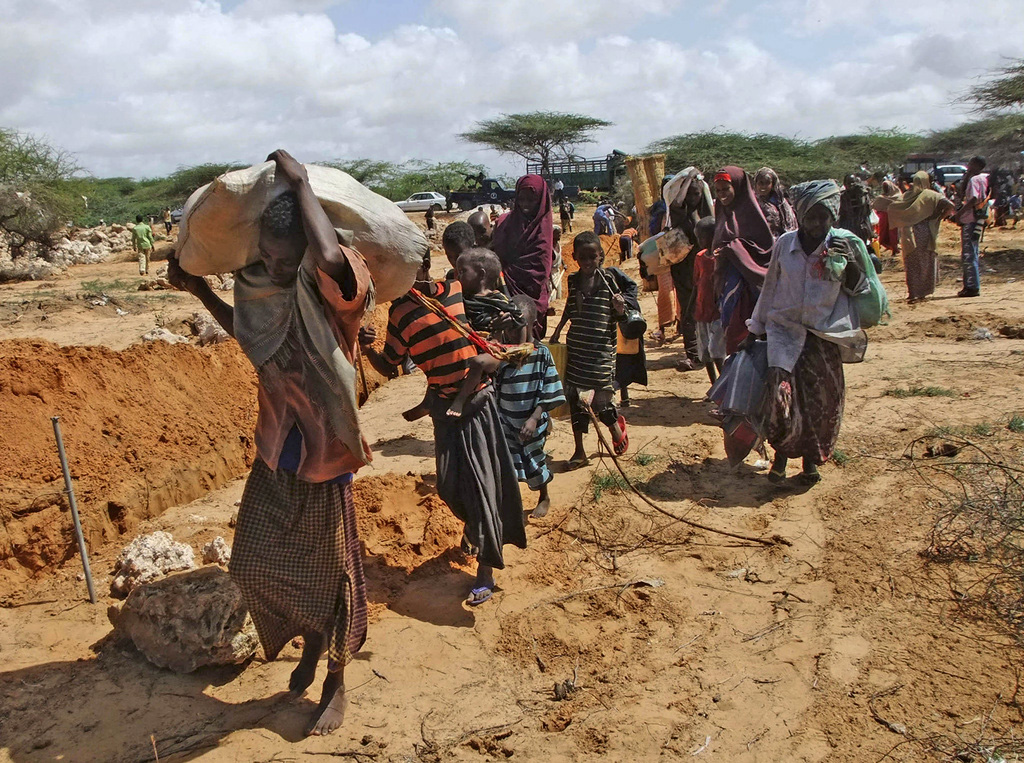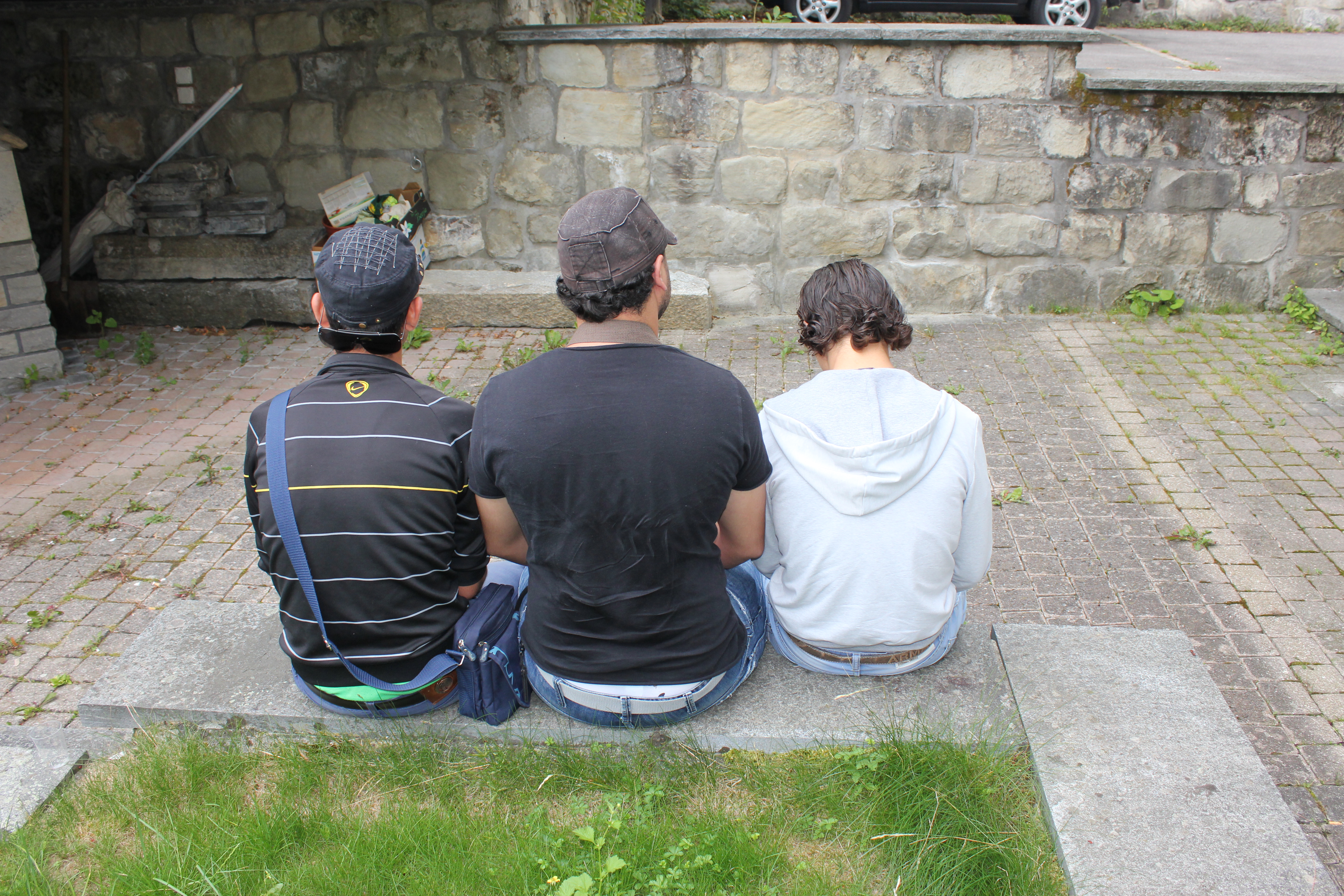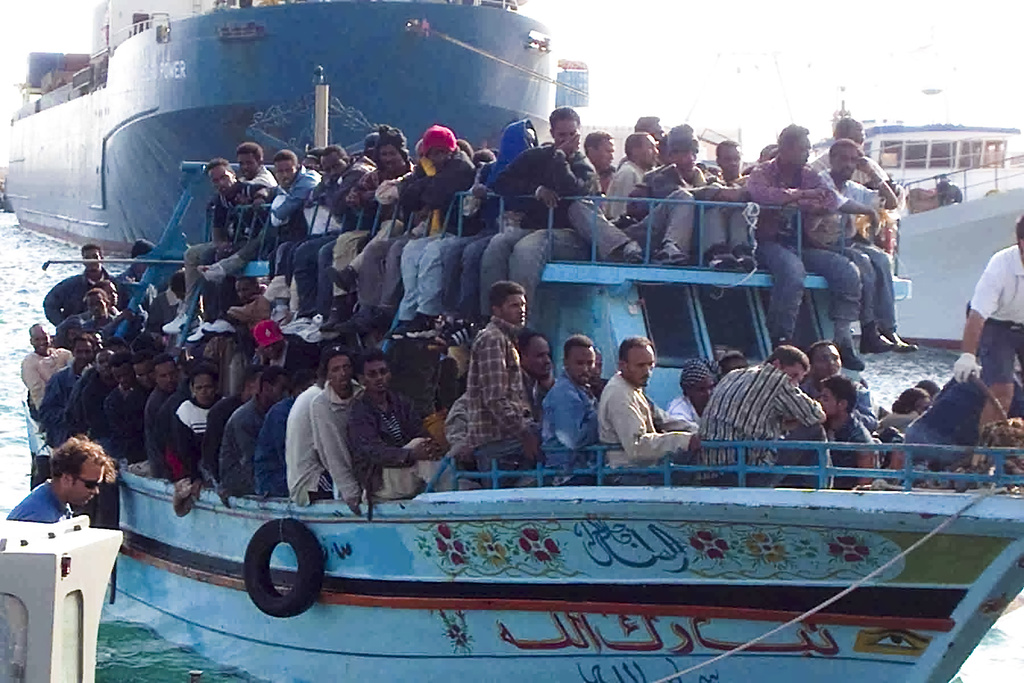Starvation and violence stalk Horn of Africa

More than ten million people are caught up in the Horn of Africa crisis sparked by the worst drought in decades and compounded by intense fighting in Somalia.
In refugee camps in Dadaab in Kenya – where nearly 400,000 people are crammed together with more arriving every day – the situation is critical, the local Swiss coordinator of Doctors without Borders tells swissinfo.ch.
The UN warned earlier this week that it was struggling to keep up with an exodus of hungry Somali refugees and many emaciated children were dying of malnutrition along the way or after arriving in neighbouring countries.
In June alone, an estimated 54,000 Somalis fled their country, trying to escape heavy fighting between government forces and al Shabaab rebels and food prices that have quadrupled in recent months due to severe drought.
Antoine Froidevaux, the local coordinator of the Swiss section of Doctors without Borders, works in Daghahaley, one of the three camps that make up Dadaab. Like many other humanitarian specialists working in the region, he is extremely concerned by the latest turn of events.
swissinfo.ch: What exactly is the situation you are facing?
Antoine Froidevaux: Since last November, more than 80,000 Somali refugees have arrived in these already overpopulated camps. The three camps were originally planned to accommodate 90,000 people, but today there are more than 400,000. We issued warnings at the beginning of the year, but the media took a while before waking up to this catastrophe.
The latest arrivals have to move into a makeshift shelter, far away from any infrastructure, with limited access to food and water and with bad sanitary conditions. The response was also slow. At the beginning of June, everyone was surprised by the arrival of 40,000 new refugees, instead of the usual 10,000 per month. The situation is getting worse every day.
swissinfo.ch: Do we know how many Somali refugees die before they reach Dadaab?
A.F.: It’s impossible to come up with a figure. From what we have been able to learn, the Somalis crossing the border now are in a very bad state. They also have trouble exiting Somalia for security reasons. There is no transport available to get to the camps, which forces most of them to walk. This concerns thousands of people and their situation is very worrying.
swissinfo.ch: What is the state of health of these refugees?
A.F.: Mid-June we carried out a quick nutritional evaluation in the makeshift camps and the results were alarming. Out of 500 children between the ages of six months and five years who were weighed, 37.7 per cent were suffering from severe malnutrition, with nearly half of them in a life-threatening condition.
swissinfo.ch: What are the priorities for the humanitarian workers on the ground?
A.F.: On a wider scale, the opening of two new camps to absorb the influx of new refugees is a priority. Some Kenyan government agencies are trying to stop this, saying there are already too many refugees and that new camps would only attract more. The Kenyan prime minister came to visit the camps and we are hoping this is a positive signal.
Digging new water wells is also a priority. It would allow people living on the outskirts on the camps to have access to the water distribution circuit. We also suffer from bureaucracy. Until June, refugees had to wait up to 40 days before being registered by the UN High Commissioner for Refugees and receiving a card giving them access to regular food distribution. The procedure has been shortened but is still very chaotic.
swissinfo.ch: Do you think the international community has realised what is happening?
A.F.: Forces are being mobilised and the main international parties have promised funding. We have to see if that will be followed through. A lot of additional means still have to be committed to improve the refugee registration process and that takes time.
swissinfo.ch: Are you concerned there will be even more refugees arriving in the coming months?
A.F.: Around 1,400 people arrive every day in Dadaab. We are assuming this figure will not decrease until the end of the year. All the parties involved here have to realise the situation is not going to ease.
The camps are in the spotlight, but it is the entire Horn of Africa that is suffering from drought. We are extremely concerned about the effects on the populations in Somalia, Ethiopia and Kenya. Unlike refugees, they are still free to do what they wish, but they don’t have access to food aid, water or health care. Like other humanitarian organisations, we are going to evaluate the situation on the ground to find out the exact needs of these populations.
The UN expects at least 10 million people will need food
aid in the Horn of Africa region.
The Ethiopian government announced for example this week that 4.5 million people need food aid there, 40 per cent more than last year.
The World Food Programme says it is providing food to 1.5 million people in Mogadishu and central and northern Somalia.
Around two million children are suffering from malnutrition in the region, and the lives of half a million are also at risk according to the UN Children’s Fund.
Aid agencies are appealing for more than $100 million (SFr81.7 million) in emergency funding while warning of dire consequences if help does not arrive.
(Adapted from French by Scott Capper)

In compliance with the JTI standards
More: SWI swissinfo.ch certified by the Journalism Trust Initiative














You can find an overview of ongoing debates with our journalists here . Please join us!
If you want to start a conversation about a topic raised in this article or want to report factual errors, email us at english@swissinfo.ch.